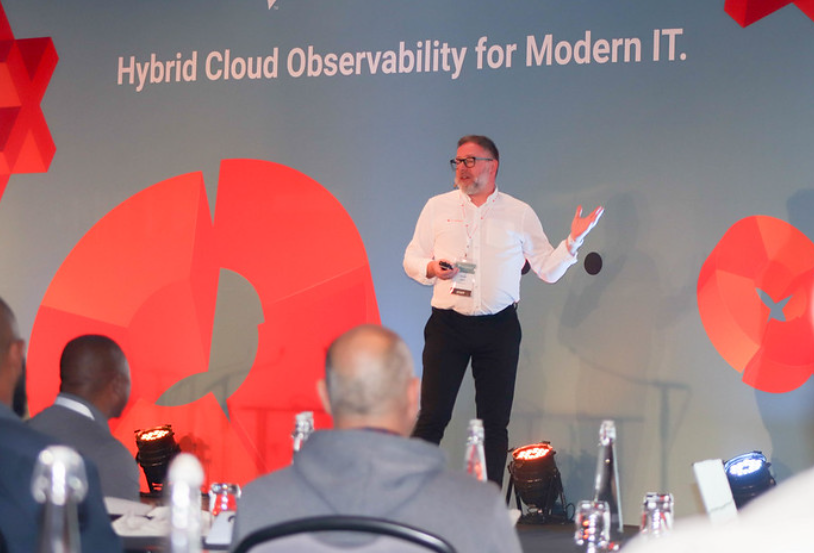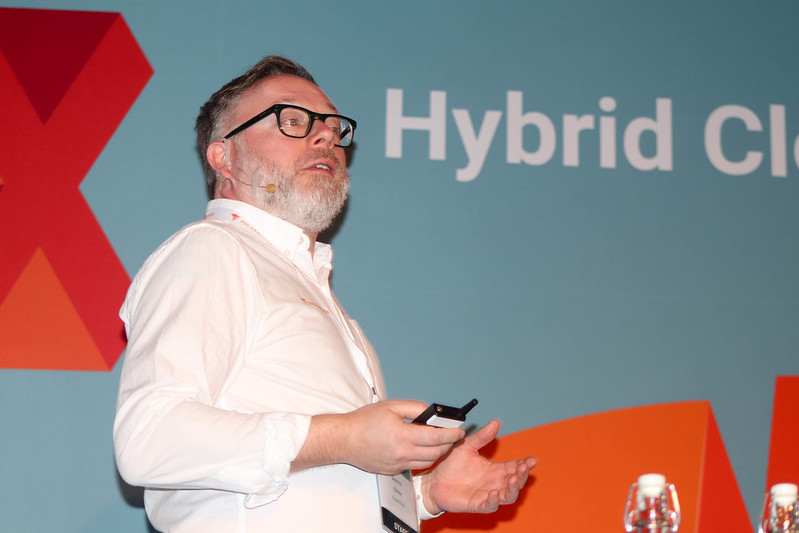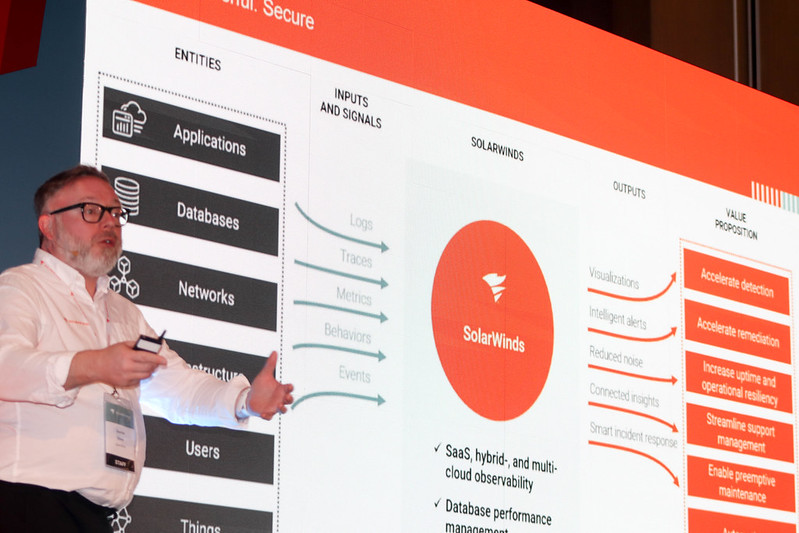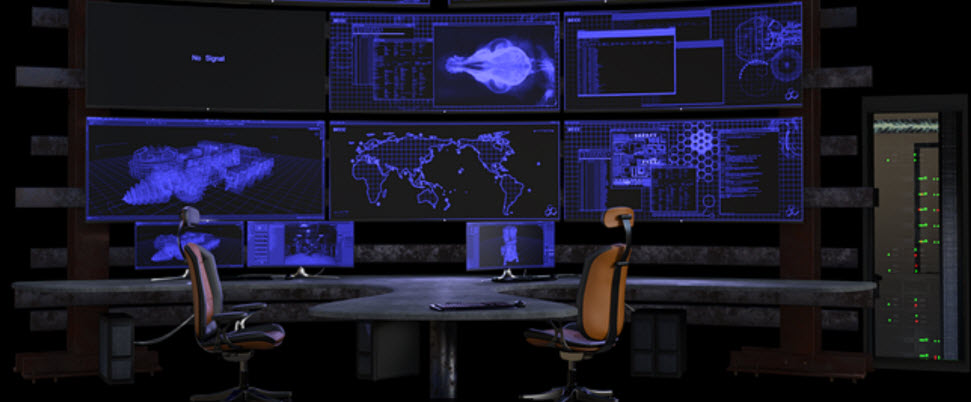Mastering IT Management: An Exclusive Interview with SolarWinds Evangelist Sascha Giese

Sascha Giese, a passionate and knowledgeable Technical Evangelist at SolarWinds.
Sascha Giese started his IT career in the early 2000s as a network and system administrator in a public school.
Joining SolarWinds in 2014 as a Solution Engineer, Sascha Giese quickly became a subject matter expert on all products in the SolarWinds portfolio. He contributed significantly to the SolarWinds Certified Professional® (SCP) exams and training curriculum.
As a Tech Evangelist, his mission is clear: to bring the often-overlooked human element of IT teams into focus.
He studied Media Informatics at the University of Lübeck, Germany, and holds industry certifications from various vendors, such as Cisco, Microsoft, VMware, and Amazon.
In our exclusive interview, Sascha shared invaluable insights into the latest trends in IT management, the innovative solutions SolarWinds is developing, and how these advancements are shaping the future of technology.
Interview Highlights:
Can you start by introducing yourself and your role at SolarWinds?
Hi, I’m Sascha Giese, a Technical Evangelist at SolarWinds. Now, you might ask, ‘What exactly does a Technical Evangelist do?’ Even I sometimes find it hard to define! In short, I represent the company and explain what we do. But, as a former technician, I also love engaging with like-minded professionals to understand where the challenges lie and how we can make life easier for practitioners while improving business outcomes. That’s essentially my job – and I do this on a local and global level. Plus, I love traveling – which is why I’m currently in Johannesburg.

Could you share your journey in the IT industry? How have your technical certifications shaped your career, especially in your role at SolarWinds?
I started in IT quite a while ago – back when I had more hair and fewer gray ones! My first job was at a public school, where I spent more time teaching the teachers about this new thing called the internet than actually working on infrastructure. Over the years, I’ve held several positions and earned certifications, mostly network-based but also in Microsoft. My goal was never to become an expert in one area but to gain a broad understanding of how IT works as a whole. This has been hugely beneficial in my current role because I can hold meaningful discussions with experts across various domains, such as databases or development, and help bridge those gaps – an important part of what I do.
As a Global Technical Evangelist, what challenges do organizations face with hybrid cloud observability?
Budget constraints are the obvious challenge, but another major issue is the lack of trust in cloud solutions in some regions. Organizations can feel uncomfortable with data being stored outside their direct control, and when you operate globally, dealing with the different regulations in each country becomes even more complicated. You often need both technical and legal expertise just to manage the complexity of working with hybrid solutions.
How does SolarWinds differentiate itself from other IT management software companies?
We’ve been in the market for 25 years, starting with network monitoring, so we have loads of experience in that area. Over time, we’ve grown our portfolio, allowing us to integrate solutions that address multiple IT layers. When something breaks, it could be the database, the network, or an application. We bring all these elements together so IT professionals can quickly identify and resolve issues, minimizing what we call ‘time to resolution’ – or as I like to say, ‘mean time to innocence,’ which means proving that it’s not your fault!”
How does SolarWinds ensure the security and reliability of its products?
We developed a concept called ‘Secure by Design.’ In a typical development process, there’s one line of development, and the code is built, tested, and packaged for customers. We had an incident a few years ago where part of this chain was compromised. So, we’ve since evolved to have multiple independent teams working on the same code but using different processes. Think of it as preparing a recipe in the kitchen and then having someone else cook it from scratch using your recipe. The result should be the same if both follow the process correctly. We’ve shared this approach with the wider software community because these kinds of challenges affect everyone, and we want to help others prevent similar incidents.

In your presentation, you mentioned the SaaS feature, which is currently available in the US. When do you plan to roll it out globally?
We are in the process of rolling out our SaaS platform, SolarWinds Observability. A lot of development resources are currently working on this project… We’re slowly expanding it to other regions, ensuring it meets our quality standards. AI features are also a key part of this platform, and we’re working with sample customers to gather the data needed to train these systems. While we’re aiming for a global rollout, compliance with varying regulations means it will take some time.
What roles do AI and machine learning play in enhancing performance management at SolarWinds?
AI helps by handling vast datasets and extracting actionable insights in seconds, something humans can’t manage on their own. One of my favorite sayings is: In the past, IT supported the business; now, IT runs the business. With AI-driven systems, organizations can make smarter, faster decisions, improving overall performance.
What trends do you foresee in cloud observability, and how is SolarWinds preparing to meet these evolving needs?
At SolarWinds, we leverage our customer community platform, THWACK, to keep a pulse on the needs of our users. Customers can suggest and vote on product features, helping guide our development priorities. This direct feedback loop ensures we stay aligned with the real-world challenges and trends.
How does SolarWinds address the cost concerns of small and medium-sized enterprises (SMEs)?
For SMEs, budget is often the main challenge. Our solutions are scalable, so a smaller company can start with the basics, observing only critical infrastructure. As the company grows, they can add more features without having to buy additional tools. For medium-sized enterprises, which often use a large number of tools, we help consolidate everything into one platform, potentially replacing up to 80% of their existing tools.
Why is full-stack observability essential in today’s complex IT environments?
With the rise of distributed systems and containerized applications, IT environments have become far more complex. Full-stack observability is crucial because it consolidates information from these disparate elements, making it easier to manage and troubleshoot. Without it, you’re left trying to piece together a puzzle when something goes wrong.

What key takeaways do you hope attendees gained from the Hybrid Cloud Observability Roadshow?
One major takeaway is the breadth of SolarWinds’ capabilities. Many attendees were surprised to learn that, in addition to network monitoring, we also offer database monitoring, and ITSM, among other things. Our tools are designed to bring teams together, reducing silos and fostering collaboration, which is essential for minimizing downtime and resolving issues faster.
What advice would you give to young IT professionals looking to grow in cloud observability?
Stay curious. IT is constantly evolving, and it’s not something you can master once and rely on for the next 20 years. You need to stay updated and continuously learn. Whether you choose to specialize in a niche or take a broader, more generalist approach like I did, the key is to remain adaptable and open to new technologies.
How do you see your role evolving with SolarWinds in the coming years?
I love my job – I get to travel, meet people, and learn about different IT practices across the globe. It’s exciting to engage with so many different perspectives. I also create content, record videos, and write articles. I think I’ll stay in this role for a while – it’s a great fit for me, and I enjoy it.






